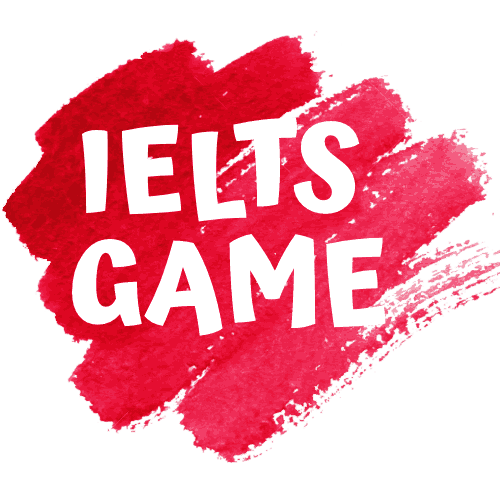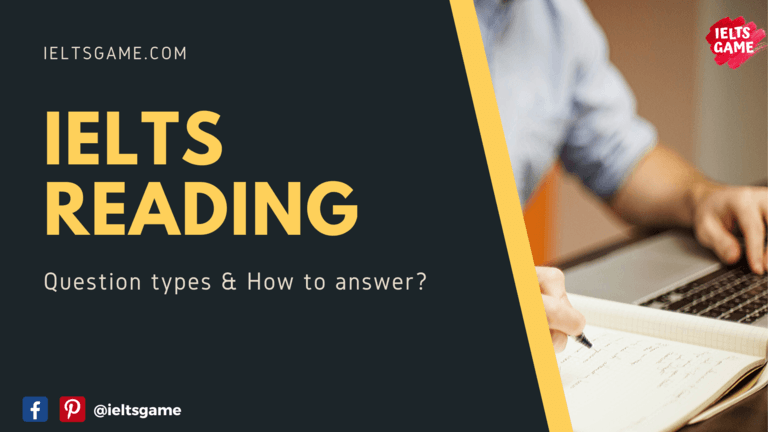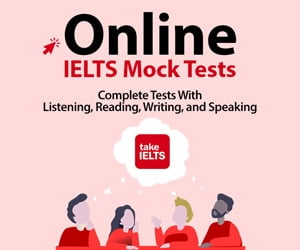IELTS Reading Question types & the best strategy to answer
Reading is one of four parts of the IELTS test [Reading, Listening, Speaking, and Writing].
This part includes 40 questions to evaluate the following skills:
1- Firstly, your general ability to understand a text. That is why almost all the questions are paraphrased with synonyms.
2. Secondly, your ability to highlight the main idea of the text and the author’s arguments.
3. Thirdly, your skill in differentiating facts and opinions as well as the main ideas and accompanying details.
4. Fourthly, to acquire the skill of extracting information from text for its inclusion in a diagram, table, or list.
As we can see, the set of reading tasks is intended more for testing general skills of text analysis, than of your knowledge of words and grammatical construction that provide an understanding of a text.
To be properly prepared, you need a clear understanding of what types of tasks and questions may occur in the Reading section.
In this article, IELTS Game will discuss all information you need to know about IELTS Reading exam and what is the different types of questions and how to deal with each type to score band +7.5 to 8.0
General Information on the IELTS Reading Part
The Reading part consists of three sections.
Every section includes 12 or 13 questions.
You are given 1 hour to complete this part.
Types of questions for General IELTS and for Academic IELTS are similar.
However, the texts in these modules are different.
- Texts for Academic IELTS Reading are longer, and they mostly concern scientific topics.
- Whereas, General IELTS Reading involves the rotation of long and short texts related to common situations, e.g. working situations.
For example, the first task of IELTS Reading General may offer two or three short advertisements, the second one may include two texts with information for employees, the third one may consist of a long text (7 to 9 paragraphs) on a general topic such as sport.
In the set of reading tasks, some questions focus on understanding the text, while others focus on some particular part of the text.
To succeed in all types of questions you need to have mastery of several reading techniques.
- The first method is speed reading, also known as ‘diagonal reading’.
This technique involves paying attention to key points, identifying important vocabulary, understanding the organization of information in a text, and understanding the author’s general idea.
- The second technique is deep reading. It is aimed at learning details and involves a deeper immersion into the text.
- The third technique is searching for details.
This technique can be applied when we are already acquainted with a text but need to ‘scan’ the text again to provide answers to questions.
We will look at every question type separately and show some examples from the test.
IELTS Reading Question Types
- Multiple Choice Question
- Identifying Information (T/F/NG)
- Identifying the Writer’s views (Yes No/ Not Given)
- Labeling a Diagram
- Matching Information
- Matching Headlines
- Matching Features
- Matching Sentence Endings
- Notes/ Table/ Chart completion
- Sentence Completion
- Short Answer Questions
So, Let’s start to explain all IELTS Reading question types and the best technique to answer each type.
1. MULTIPLE CHOICE Question
One of the most popular question types is multiple choice.
In the Reading section, the variations of this type may be as follows: it is necessary to choose either one of the variants from A to D, or two answers from the variants from A to E, or three answers from variants from A to G.
For example, after this reading sample text “What do hurricanes mean for dolphins?” you may face question of the following type:
A. More female dolphins survived the hurricane than males
B. Female dolphins were able to breed earlier than usual
C. The dolphins had access to greater number of shrimp and fish
D. There was a decrease in the number of dolphins being caught for sport or food
E. The dolphins had less contact with humans after the hurricane
In this case, your general understanding of the text and ability to extract facts are tested.
Multiple choice questions can be designed to reveal the extent to which the examiner has understood the author’s idea.
For example, let us look at the following question on the text on ‘Jurassic Park’:
A.To suggest that scientists should look to science fiction for inspiration
B.To argue that people may choose to believe the improbable in order to be entertained
C.To persuade us that art and science can be skillfully linked
D. To demonstrate that scientific research can provide a source of entertainment
2. IDENTIFYING INFORMATION (T/F/NG)
This IELTS Reading question type requires highlighting information.
In other words, you need to identify to what extent a sentence from the task corresponds to the text.
- The ‘True’ option means that the sentence corresponds to the information in the text.
- The ‘False’ option says that the sentence does not correspond to the information in the text.
- The ‘Not Given’ option means that the information presented in the sentence is absent from the text. That is, it is neither true, nor false.
3. IDENTIFYING THE WRITER’S VIEWS/CLAIMS (YES/NO/NOT GIVEN)
This question type is like the previous one.
However, you need to identify which sentence:
- corresponds to author’s view/claim (‘Yes’), or
- does not correspond (‘No’), or
- does not have any information given in the text (that is, it is impossible to say what the author thinks about this), rather than identify some information given in the text.
In this case, ‘view’ represents the author’s opinion, whereas ‘claim’ is a talking point presented as a fact by the author.
4. LABELING A DIAGRAM
When doing this task, you will see a diagram or depiction of a process.
Here, you need to suggest a title for the diagram or its parts using an appropriate word or a few words from the text or the list of suggested variants.
5. MATCHING INFORMATION
This task in IELTS Reading exam requires you to match information with a paragraph in the text.
That is, you need to find a certain idea in the text and match it with a phrase that accurately describes this information.
The possible variants of the information you must find include the following: numbers, dates, measurements, reasons, causes, effects, conclusions, issues, reactions, definitions, descriptions, etc.
For example:
Which paragraph contains the following information?
N.B. You may use any letter more than once
Write the correct letter, A-E, next to questions, 1-7 below.
1. Visual evidence of the gecko’s ability to resist water
2. A question that is yet to be answered by the researchers
3. The method used to calculate the gripping power of geckos
4. The researcher’s opinion of the gecko’s gripping ability
5. A mention of the different environments where geckos can be found
6. The contrast between Stark’s research and the work of other researchers
7. The definition of a scientific term
You should pay attention to plurals in the tasks of this type because one paragraph may present information related to only one of the examples, whereas the question asks you to find a paragraph presenting two different methods or opinions.
6. MATCHING HEADINGS
The goal of this task is to match a heading from the list of offered variants with the correct paragraph or part of a text.
Before doing this task, it is recommended that you start with reading headings, then proceed to reading the text.
In this way, you will be able to identify the topic of the text which can be very useful aid to its understanding.
You can underline the most important words in every heading to help you to select a heading to a passage more accurately and quickly.
You can make notes near every heading as well.
– For example, you can speculate on what words or subtopics may be encountered in the paragraph corresponding to this heading.
However, it is not a good idea to read the whole text at once.
It would be better to stop after every paragraph to select a heading for it before moving to the next part.
– For example, we can make notes in the next list of headings as follows:
i. The future of urban planning in America [future progress, change, development]
ii. Conflicting ideas through the history of urban planning [conflicting two or more ideas, contradiction, competition]
iii. Urban planning has a long and varied history [examples from different cultures, dates
(years, centuries)]
iv. Financial problems helped spread an urban planning concept [financial crisis, solution to problems]
v. The background to one particular planned community [success story, outstanding experience]
vi. Political change obstructs progress in urban planning [reforms, revolution, obstacles]
vii. An urban plan to reduce traffic [strategy, traffic jams, roads and cars]
7. MATCHING FEATURES
This question type is used to test your understanding of large texts containing, different theories or information on various people, places, years or things.
The task provides a list with different variants which must be matched with the appropriate sentence.
It is important to remember that the questions go in a different order to the text.
For example, the task of this type may ask you to match a scientist’s name with a theory developed by him or her.
8. MATCHING SENTENCE ENDINGS
In this IELTS reading question type, the student needs to match the correct sentence endings from the list of offered variants.
For example, a task may look as follows:
Write the correct letter, A-K, in boxes 21-26 on your answer sheet
21. In Alaska, biologists keep a check on adult fish
22. Biologists have the authority
23. In-Season Abundance-Based Management has allowed the Alaska salmon fisheries
24. The Marine Stewardship Council (MSC) was established
25. As a result of the collapse of the salmon runs in 1999, the state decided
26. In September 2000, the MSC allowed seven Alaska salmon companies
A. To recognize fisheries that care for the environment
B. To be successful
C. To stop fish from spawning
D. To set up environment protection laws
E. To stop people fishing for sport
F. To label their products using the MSC logo
G. To ensure that fish numbers are sufficient to permit fishing
H. To assist the subsistence communities in the region
I.To freeze a huge number of salmon eggs
J. To deny certification to the Alaska fisheries
K. To close down all fisheries
This type of task provides us with more answer options than is necessary, that is some variants will not be used.
When you must finish a sentence in a task, you should pay attention to two main points: grammar and meaning.
Some of the variants can be rejected immediately because they are grammatically incorrect.
However, that is not always possible, as in the example above where the answers have similar structure.
Therefore, we need to pay more attention to meaning, the general logic of a sentence, and its connection to a text.
9. NOTES / TABLE / FLOW-CHART COMPLETION
This task is like the previous one. However, there is a visual distinction from sentence completion.
Here, you must choose the necessary word from a text to complete notes, table, or flow-chart.
For example, question-task can be articulated in different ways:
| Name of group | Wave number |
|---|---|
| Inuit | 22. ______________ |
| Apache | 23. ______________ |
| Pima-Papago | 24. ______________ |
| Ticuna | 25. ______________ |
10. SENTENCE COMPLETION
This type question tests your ability to discern detailed information from the offered passage.
You must fill in gaps in sentences using the appropriate word or group of words taken from the text.
Notice that the sentences will be paraphrased as a result. The task looks like as follows:
1. Two ingredients used to make paint found in the cave were __________ and ___________.
2. The scientists used the _________ on the equipment to help work out how the paint was made.
11. SHORT-ANSWER QUESTIONS
This type of IELTS Reading questions is like sentence completion, as you have to use words from the given text as well.
However, in this case, when answering a question, you do not fill in the necessary words in an already written sentence but are required to give an answer using a few words.
1. Which of the artefacts mentioned are the oldest?
2. When was the material Henshilwood found originally made?
3. What two common materials did ancient humans use to obtain their ochre?
When doing this type of reading questions, it is important to understand that even if a numeral is written in letters, it is a number.
Thus, when answering the questions, we can use the following: one word, one word + number, two words, two words + number.
Conjunctions like ‘and’ are regarded as a separate word. For example, only an answer “black, white” will be counted, whereas “black and white” will not.
Although it may seem that this question type is a variant of the previous one, there is one significant difference.
This type of task represents a kind of information that generalizes a text and is presented as grammatically connected and consistent sentences. You must do the following:
- read carefully and understand the given short summary;
- determine which kind of word is necessary to fill in every gap;
- find the appropriate part of text and read it;
- find the necessary word in this part.
SUMMARY
To sum up, every set of questions in the IELTS Reading part represents a particular type of task that has its own peculiarities.
Knowledge of these peculiarities not only enables you to be prepared for the specifics of your exam in advance, but also makes it possible to form the strategy for the most effective accomplishment of these tasks.
However, you should remember that IELTS represents a comprehensive test of your level of English; therefore, in addition to getting acquainted with its format, you should pay attention to the enhancement of your level of English in whole.
To make your Reading tasks easier, you can practice reading newspapers and academic articles. Some of them are used in the tasks in the Reading section.



One Comment on “IELTS Reading Question types & the best strategy to answer”
good